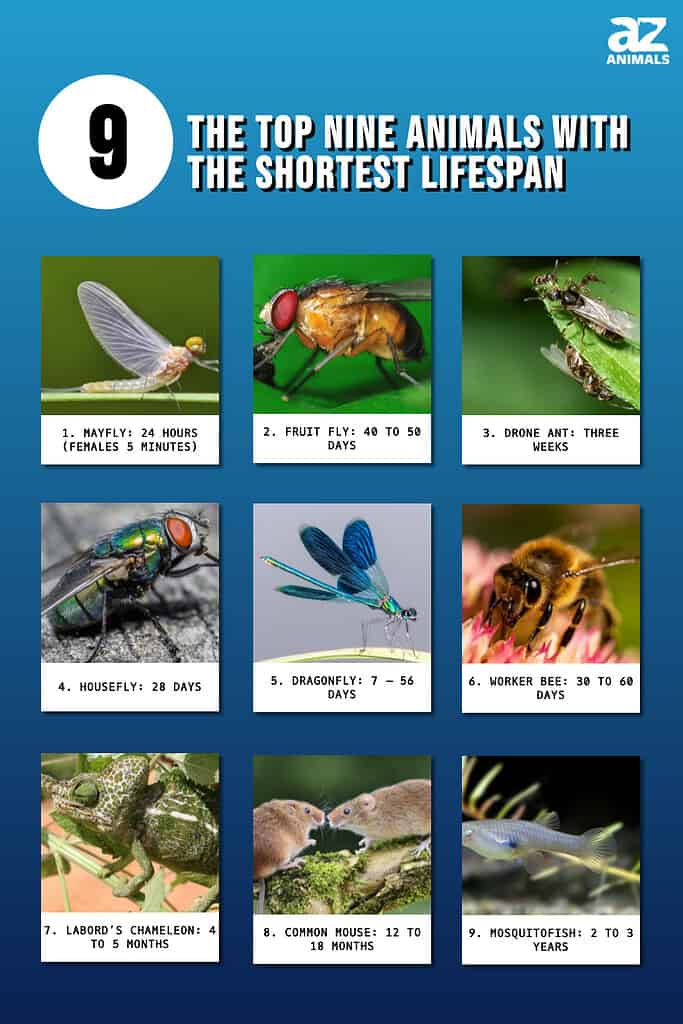
The lifespan of an animal depends on its habitat, size, food sources, and its defensive capabilities along with other factors. The insects on this list progress through a life cycle that includes several stages. In some cases, one stage of an insect’s life cycle is much longer than another.
A small rodent on this list is considered a pest and at risk of being killed wherever it makes its home. It also has a lot of natural predators! A reptile listed here has a natural life cycle it moves through to keep its population thriving in Madagascar.
Read on to discover the specific facts connected to each of these nine animals categorized as having the shortest lifespan.
#9 Mosquitofish: 2 to 3 years

.
©topimages/Shutterstock.com
Mosquitofish are found in areas of the Mississippi River and in the Gulf of Mexico. This fish consumes a large number of mosquito larvae. Female mosquitofish grow to 2.8 inches in length and males reach a length of 1.6 inches. The lifespan of these small fish only goes up to 2 to 3 years.
Their size makes them easy prey for larger fish in their habitats such as catfish, bluegill, and bass. They’re also eaten by turtles, snakes, and other animals that live in the water.
Despite having a short lifespan, mosquitofish are plentiful. Unlike other fish, mosquitofish give live birth to their young. A female mosquitofish can have as many as 60 babies.
#8 Common Mouse: 12 to 18 months
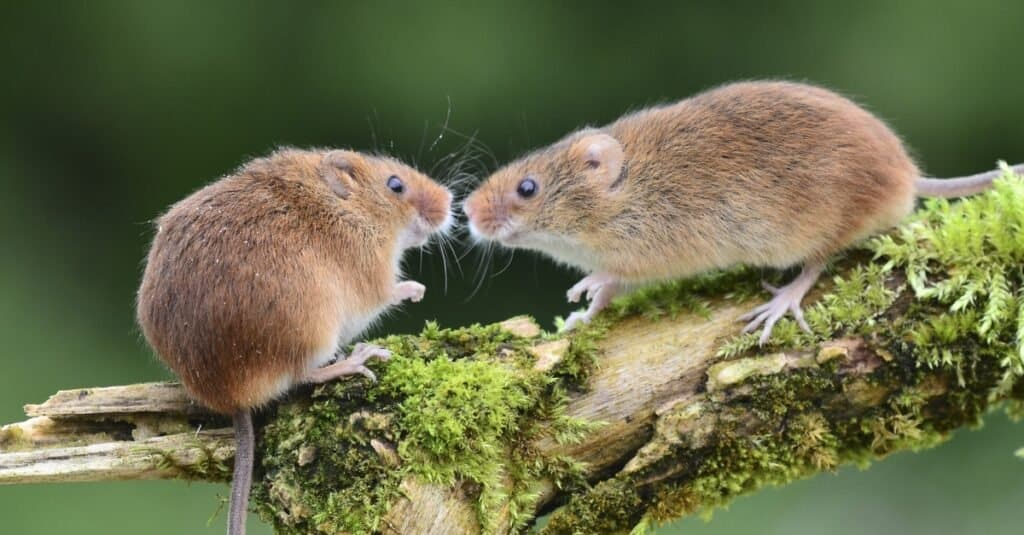
©colin robert varndell/Shutterstock.com
At three or four inches long, the common mouse is adaptable, living in many types of environments. They can live in homes, on farms, in city buildings, or in the woods. This small rodent is on a list of animals with the shortest lifespan because it only lives up to three years.
Not surprisingly, this rodent has numerous predators including cats, snakes, foxes, and owls, among others. In addition to that, it has a short lifespan because it’s considered a pest. They can chew electrical wiring, tear into items of food and leave messes of small feces behind in a home. Mice are killed by traps and poison set out by homeowners, building managers, etc.
Despite these circumstances, the common mouse population remains strong. Common mice become sexually mature at just 30 days old. A female mouse can have as many as ten litters of four to six babies in just one year.
To read more about the common mouse look here.
#7 Labord’s Chameleon: 4 to 5 months

.
©irinaroma/Shutterstock.com
Labord’s chameleon is named after a French explorer named Jean Laborde. He was the one who first spotted these reptiles in their forest habitat in Madagascar. This colorful chameleon is hard to overlook. Males have bright green skin and females are green with a pattern of blue, orange, and purple spots. It has a life cycle of just one year.
The life cycle begins when Labord’s chameleons are born in the month of November. The young reach sexual maturity at the end of January or February. These chameleons breed, and their young are born, in November. The older adult Labord’s chameleons in the population die at the end of the year.
To discover more on chameleons, travel to this page.
#6 Worker Bee: 30 to 60 days
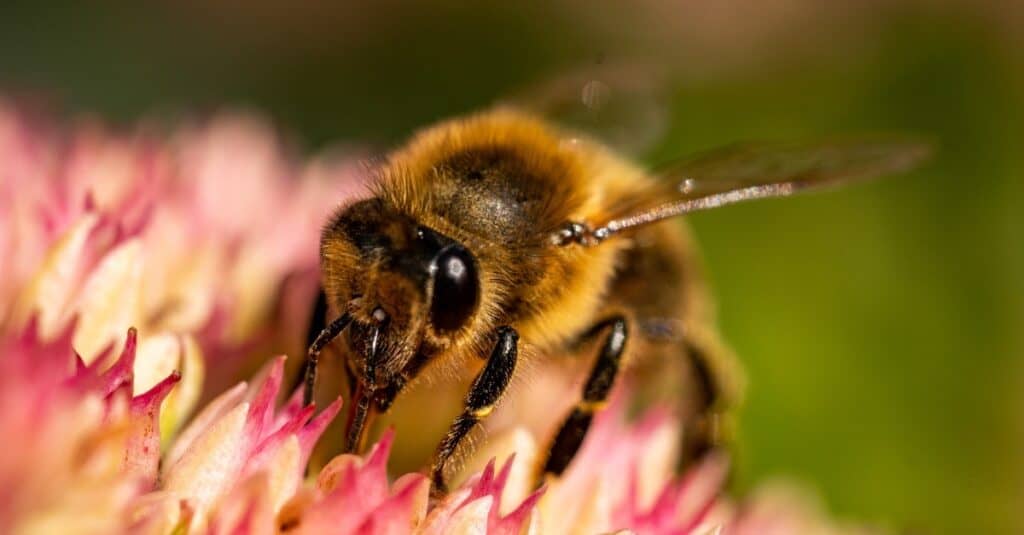
©iStock.com/Niklas Toelle
If any bee can be described as busy; this is the right one. A young worker bee has lots of jobs. It feeds the larvae of bees in the hive, processes nectar, and makes honey. As a worker bee gets older it has to get water from the area and bring it back to cool the hive.
In short, worker bees spend their brief lifespan completing tasks to help a hive and its queen to survive. One of the most interesting things about a worker bee is its lifespan varies according to the season.
A worker bee that is growing and active in the summer has a lifecycle that ends after about 6 weeks or 30 to 60 days. Some might say that worker bees active in the summer end up working themselves to death. Alternatively, a worker bee active in the winter months can live for six to eight months.
This is because less effort is required of this worker bee in the wintertime and it’s able to store fat in its body for nourishment. They are sometimes called winter bees. In addition, worker bees are essential at this time of the year to keep the queen warm in the hive.
To read more about bees visit this page.
#5 Dragonfly: 7 – 56 days
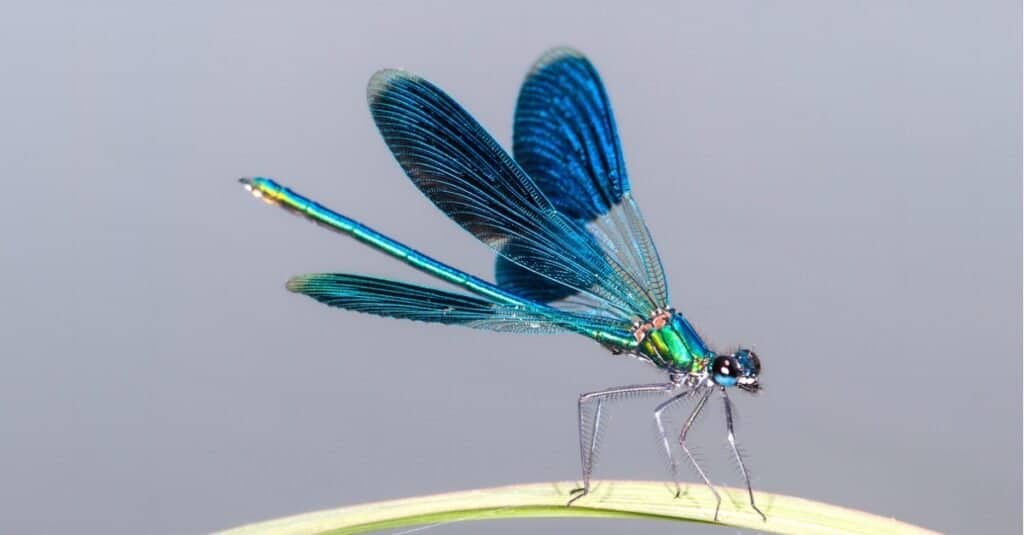
©iStock.com/MBadnjar
Have you ever seen a dragonfly hovering around the cattails of a lake or pond? They are colorful insects and very interesting to watch. They are on this list of animals with the shortest lifespan because an adult dragonfly lives just 7 – 56 days. However, to get the complete picture of a dragonfly’s life, you have to look at the earlier stages of its life cycle.
During the stages of this flying insect’s life cycle, it transforms from egg to nymph to adult dragonfly. Once the eggs are laid in the water, it takes about a week for them to hatch. Young dragonflies or nymphs emerge from the eggs and stay in the water.
Once it comes out of the water and molts into an adult dragonfly, it lives about 7 – 56 days.
Visit here for more information on dragonflies.
#4 Housefly: 28 days

©Fotopstryk/Shutterstock.com
Houseflies live wherever humans do. Why? Because they’re attracted to the sights and smells of the foods that humans eat. These flies may land on a filled garbage dumpster one moment and land on a sandwich at a picnic the next!
They thrive in various weather conditions and live on every continent. But the lifespan of an adult housefly is very short. They live just one to two months.
The life cycle of a housefly includes the egg, larva, pupa, and adult stages. The eggs of a housefly hatch in less than 24 hours. The larva stage lasts from five to fourteen days.
The pupal stage goes from three to ten days. So, each of the stages of this fly’s life cycle is short in duration. But don’t worry about a shortage of houseflies! Every female housefly can lay as many as 500 eggs at one time.
To learn more about the housefly, visit this page.
#3 Drone Ant: Three Weeks
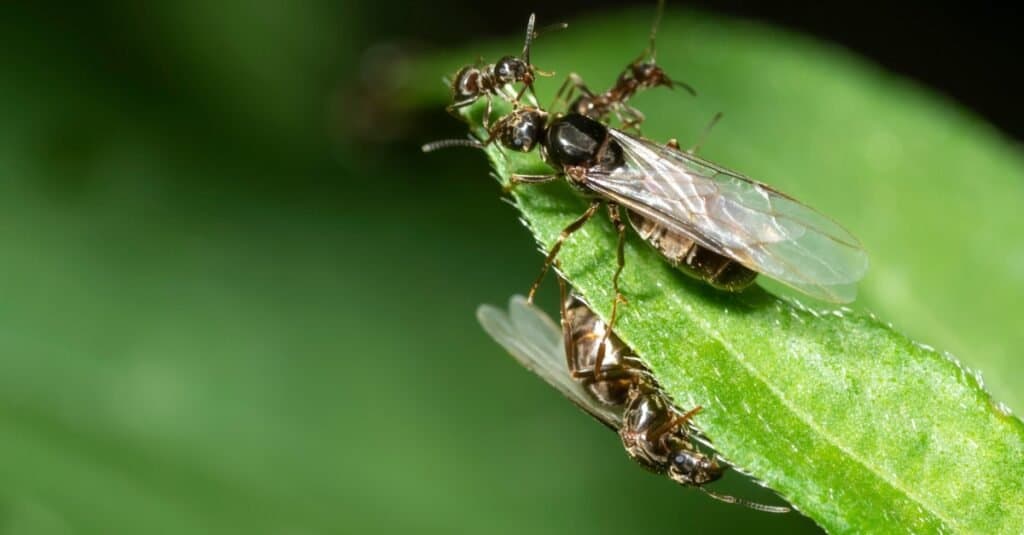
©Janny2/Shutterstock.com
A drone ant doesn’t look like the usual ant you may see on a sidewalk. It has wings and a large body similar to a wasp. However, it is an ant with a very important role in the life of its colony.
All drone ants are male. This ant’s purpose is to breed in order to ensure its colony’s population continues to flourish. In fact, it’s known as a reproductive ant. The life cycle of this ant starts and ends in just 1-2 days.
To learn more about the drone ant, read here.
#2 Fruit Fly: 40 to 50 days
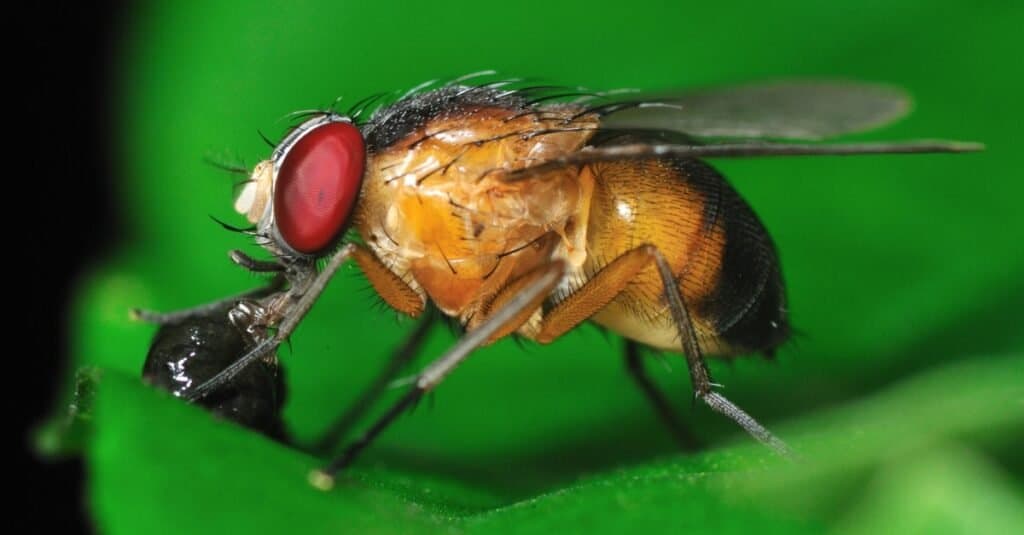
©Jordan Lye/Shutterstock.com
Fruit flies are very small at just one-eighth of an inch long. Their red eyes make them a little easier to identify when comparing them with gnats and other flies.
These tiny flies are attracted to rotting fruit. Not surprisingly, they show up in kitchens in homes around the time people bring in their vegetables and fruits from the backyard garden. The life cycle of a fruit fly lasts just 14 days!
A female fruit fly can lay anywhere from 500 to 2,000 eggs in a single lifetime! Which is only 2 weeks! The eggs hatch into larvae in as little as 12 hours. Each egg takes about 10 to 14 days to mature into an adult fruit fly. Their entire fruit life existence including egg life is about 40 to 50 days.
Fruit flies serve as a food source for many different types of animals including frogs, spiders, toads, and fish among others. Though they can be a pest when buzzing around a bowl of fruit, they have an essential role to play in the ecosystem.
Check out more on fruit flies right here.
#1 Mayfly: Twenty-Four Hours

©Achkin/Shutterstock.com
The mayfly is a small flying insect that lives around lakes, ponds, and streams in North America. It belongs to the order Ephemeroptera.
The fact that it belongs to this order says a lot about why this insect is at the top of the shortest lifespan list. The word Ephemeroptera is Greek and means, ‘short-lived.’
The life cycle of a mayfly starts in egg form. The eggs are laid in the water where they hatch shortly thereafter. Mayfly nymphs emerge from the eggs and remain in the water.
In fact, depending on their species, some mayfly nymphs stay in the water for months while others remain there for years. Eventually, the mayfly nymph climbs out of the water, molts, and becomes an adult mayfly. Adult mayflies live less than 24 hours.
Check out more on the fascinating mayfly right here.
Summary of the Top Nine Animals With The Shortest Lifespan
| Rank | Animal | Lifespan |
|---|---|---|
| 1 | Mayfly | 24 hours (Females 5 minutes) |
| 2 | Fruit Fly | 40 to 50 days |
| 3 | Drone Ant | 3 Weeks |
| 4 | Housefly | 28 days |
| 5 | Dragonfly | 7 – 56 days |
| 6 | Worker Bee | 30 to 60 days |
| 7 | Labord’s Chameleon | 4 to 5 months |
| 8 | Common Mouse | 12 to 18 months |
| 9 | Mosquitofish | 2 to 3 years |
Animals with the Shortest Lifespans vs Longest Lifespans
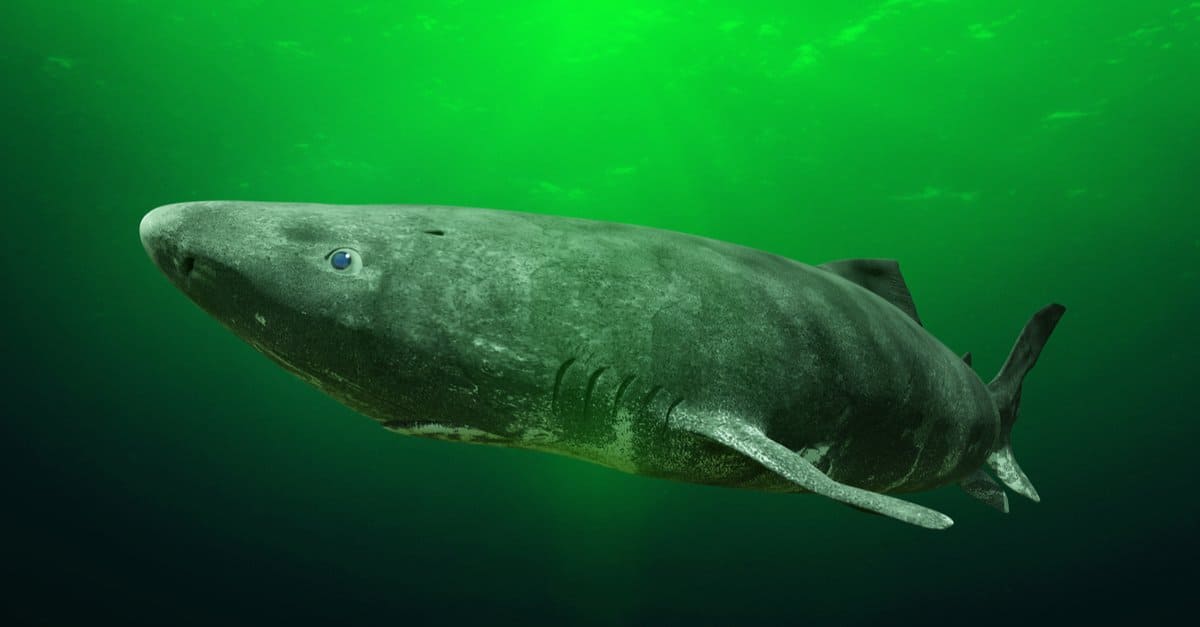
The oldest
Greenland shark
has been alive for 272-512 years.
©Dotted Yeti/Shutterstock.com
Now that we’ve explored animals that live very short lives, has it caused you to wonder which animals live very long lives? Below is a list of animals that have been recorded as living the longest of any on Earth. For more details check out: The Longest Living Animals: From 188 Years to Immortal!
- The Oldest Sea Sponges – 11,000 years old
- The Oldest Corals – 5,000 years old
- The Oldest Greenland Shark – 272-512 years old
- Ming the Quahog Clam – 507 years old
- Bowhead Whales – 200-268 years old
- Deepwater Rougheye Rockfish – 205 years old
- Jonathan the Tortoise – 188 years old
- George the Lobster – 140 years old
- Grandma” Big Mouth Buffalo Fish (Freshwater) – 112 years old
Honorable Mention: Other Animals with Short Lifespans
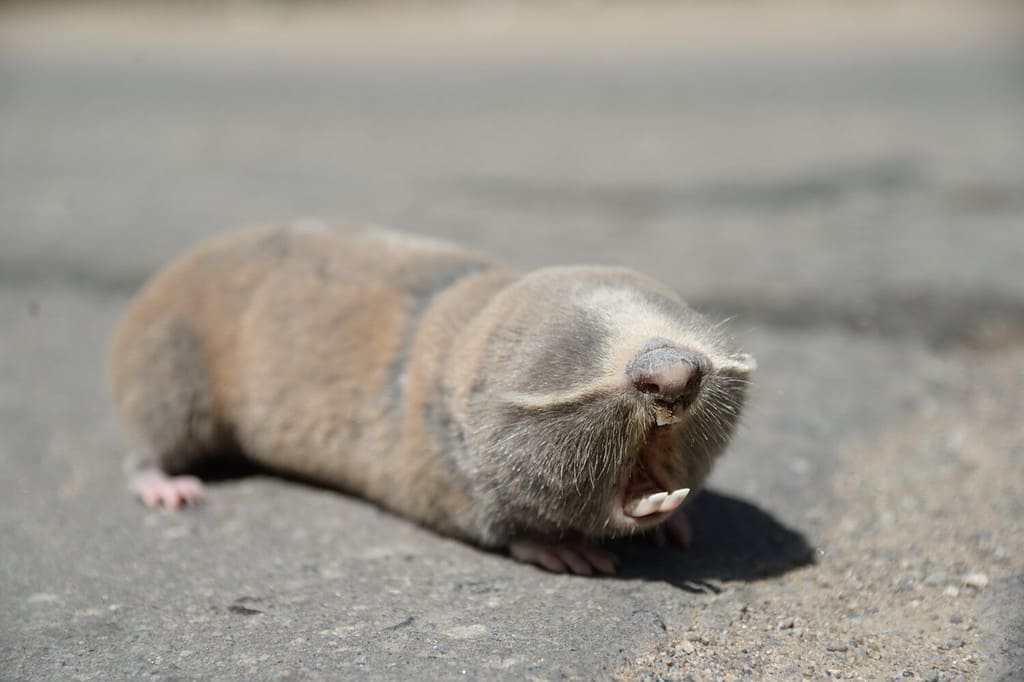
There are over 40 species of these little mammals and they have a typical lifespan of less than two years.
©EvgenS/Shutterstock.com
There are quite a variety of animals that have short lifespans. They all come from a wide variety of families and although many of the animals in similar families, like insects, tend to have similar short lives, we’ve branched out to include animals from all varieties. While some may not be as short-lived as an insect, their lives are still rather short compared to others in their class. Here are a few other species that don’t last a long time:
- Panther Chameleon (Furcifer pardalis) – these diurnal, colorful chameleons are found in the eastern and northern parts of Madagascar in the tropical forest. Although they tend to live longer in captivity, females of the species still have a shorter lifespan in either situation. In captivity, they may live only between 2 to 3 years, while males have a longer lifespan of between 5 to 7 years. In the wild, females may only live for one to two years due to the stresses of egg-laying and reproduction.
- Mole (Talpidae) – these interesting little mammals can be found on every continent with the exception of South America and Antarctica. They can be found in a variety of different habitats, from grasslands, sand dunes, and swamps to woodlands and wetlands. It is believed that they are colorblind and nearsighted, but they are incredibly good at detecting light. There are over 40 species of moles and the lifespan for most species is typically less than two years.
- North American Rat (Rattus norvegicus) – also known as brown rats, these mammals are found on every continent with the exception of Antarctica and while they once were found only in forests, they can now be found just about everywhere. They are typically more active at dusk as well as during the night. They live up to four or more years, but when in the wild, they generally only live about two years.
The photo featured at the top of this post is © iStock.com/13308761
Thank you for reading! Have some feedback for us? Contact the AZ Animals editorial team.






